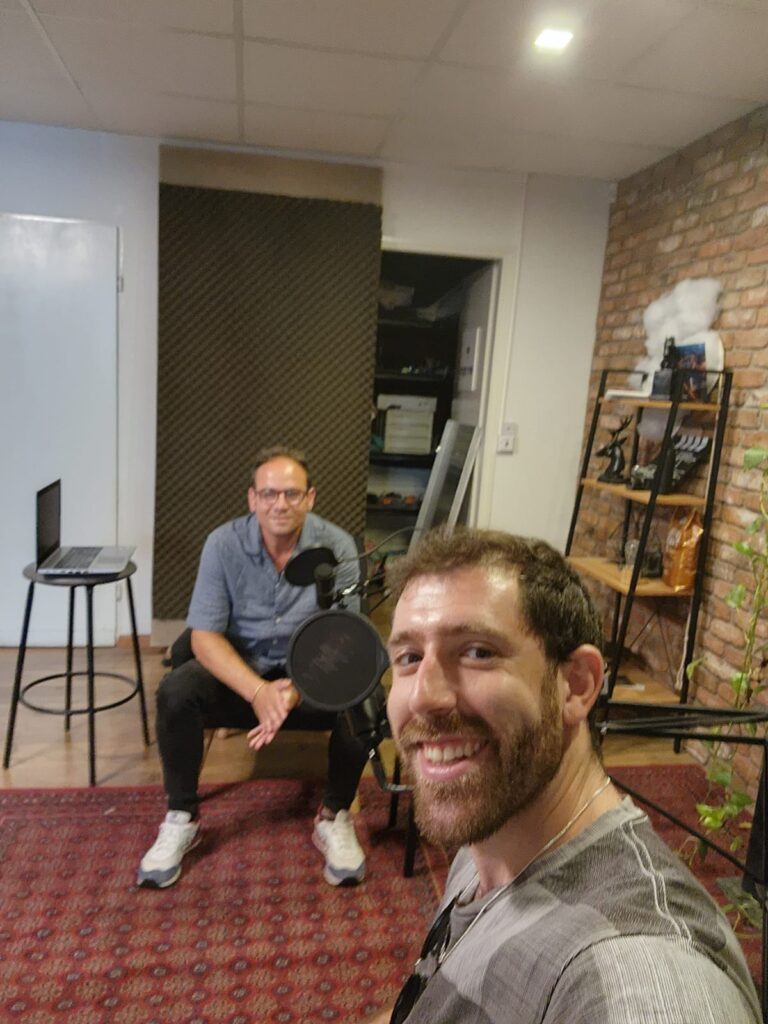Are you blind?
If you are reading this, then probably not.
But have you ever thought of how someone who was blind and wanted to learn about tech would read this?
Also, probably not. But, startup founders, Menashe Shani and Shlomi Shushan, two entrepreneurs based in Israel, are looking to change that reality and make accessibility part of the digital user experience from the start of the development process.
I was excited to follow up with Menashe after my episode with him on High Tech on the Low, “Usability Not Just Accessibility” to learn about his successful launch in Japan, which he had teased about on the show. Accessibility solutions are critical for people with disabilities to navigate the digital world. However, not all accessibility solutions are created equal.
Some may meet basic compliance requirements but fail to provide an optimal user experience. While others are overlay services that lack real depth to their solutions. I was eager to learn more about what Purple Lens is doing differently.

Why Accessibility Solutions are Important
Accessibility solutions ensure that people with disabilities have equal access to information and services on the web. It is a basic right, like for any able-bodied web surfer, and that is why we are even seeing an uptick in legislation and lawsuits regarding improper accessibility compliance. “These solutions make it possible for people with visual, auditory, and physical disabilities to navigate and use websites and applications like you or I,” Menashe adds.
Without these solutions, people with disabilities can be excluded from accessing information, applying for jobs, or even ordering food online. When Menashe and Shlomi decided to start Purple Lens in 2020, they knew they wanted to make something amazing for web accessibility but that stood out from the other solutions in the market. What they came up with was to create a new standard in the industry that would set the stage for accessibility from the outset of a web development project.
Purple Lens Doesn’t Want to be a Band-Aid
Purple Lens, originally founded by Shlomi after a battle with cancer, has quickly gained popularity, having attracted over 500 customers spanning the globe including in: Brazil, Australia, Israel, and recently Japan! “I wanted to do something good for people,” Shlomi adds, crediting his bout with cancer for inspiring him to go along this path and help others who also battle obstacles in life. What is particularly interesting with Shlomi and Menashe’s web toolkit is that it serves more than those that are disabled, since if you develop with accessibility in mind, then the website becomes inherently more accessible for any user base.
The pair’s DIY cross-platform, assistive technology solution, almost like Elementor, but for accessibility, which helps developers integrate accessibility into their initial web design procedures. Sitting on the backend of the site, this allows developers and even business owners to craft accessible web platforms from the outset, not having to worry about legal issues or poorly integrated accessible widgets later down the road. Of course, they are also always learning from the disabled community and are open to feedback to help refine their offerings.
Moreover, the options they are provided with in the development process are so vast that Purple Lens does more than just help developers and business owners meet disability compliance requirements. The solution provides a streamlined, superior user experience for ALL people.
Japan as a Model for Accessibility Adoption
Recently, Purple Lens expanded to Japan, a much anticipated move for the duo. Japan has a unique culture and tax structure that prioritizes accessibility. Unlike other countries that penalize people for non-accessible websites as a means of promoting accessibility, the Japanese help incentivize its adoption with tax credits. Establishing themselves in Japan means that Purple Lens enters the market at a time where there is a big push in Japan for accessible solutions and they will likely gain recognition and trust from the community.
When asked why they went for Japan and not the US, Menashe said, “Other than the tax incentives for potential customers, the US requires more careful planning and a bigger budget than we have now. Japan is the perfect opportunity for us to continue expanding and growing as we set our path for the US.” The company is hopeful about Japan and have even gone so far as to localize much of their content to better attract Japanese customers on their terms. As Shlomi puts it, “we believe that regulations are essential in pushing people forward, but we hope our work with actual people who want to build with accessibility in mind for everyone will lead to more adoption.”
They are committed to helping the disabled and developer community and creating a standard for web accessibility that meets able and disabled people. Perhaps even one day there may be a Purple Lens Seal of Approval certifying an effective, user-friendly web experience. What is for certain is that their innovative approach is changing the way people perceive accessibility solutions and making the digital world more accessible for everyone.





















Comments 1